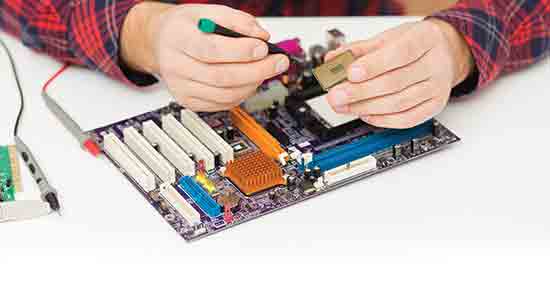Many buyers face complications while trying to fix a tech product. When such a gadget falters, most consumers buy a new one since fixing such products is difficult and expensive. On occasions manufacturers may withhold information or stop repairing earlier models, thus forcing buyers to go for a new gadget. This kind of a practice, where a product breaks easily or is ‘upgraded’ frequently making an earlier version obsolete, is followed to make consumers buy replacements.
The Union Government is now taking steps to help consumers against such practice, known as ‘planned obsolescence’. The Right to Repair will empower consumers in the local market, harmonise trade between the original equipment manufacturers and the third-party buyers and sellers, and emphasise on developing sustainable consumption of products and reduction in e-waste.
Third-party repairs
Once it is rolled out in India, it will become a game-changer both for the sustainability of the products and as well as serve as a catalyst for employment generation through Aatmanirbhar Bharat by allowing third-party repairs.
The framework aims to ease access to overhauling services not just by original manufacturers but also by reliable third-party technicians to lower costs and lengthen the shelf life of devices, equipment, and home appliances.
To emphasise on LiFE (Lifestyle for the Environment) movement through sustainable consumption, the Department of Consumer Affairs has taken a significant step for developing an overall framework for the Right to Repair.
A committee formed by the Department of Consumer Affairs has identified some important sectors for the right to repair. These include farming equipment, mobile phones and tablets, consumer durables, and automobiles and auto components.
User manuals
It was also mentioned that companies avoid the publication of manuals that can help users make repairs easily. Manufacturers have proprietary control over spare parts (regarding the kind of design they use for screws and other). Monopoly on repair processes infringes the customer’s’ ‘right to choose’.
For instance, digital warranty cards ensure that by getting a product from a “non-recognised” outfit, a customer loses the right to claim a warranty. Thus, one has to be wary when buying from a retail outlet.
Further, copyright holders can control or restrict access to technology. There is a controversy over Digital Rights Management (DRM) and Technological Protection Measure (TPM). DRM refers to technologies used to enforce certain limitations on the use and transfer of copyrighted digital content. TPM stands for technologies to control or restrict the use of and access to digital media content on electronic devices.
According to a statement from the Department of Consumer Affairs, manufacturers are encouraging a culture of planned obsolescence, whereby the design of a gadget is such that it lasts a particular time only. Thereafter, it has to be mandatorily replaced. When contracts fail to cede full control to the buyer, the legal rights of owners are damaged.
Tech companies
It was also felt that tech companies should provide complete knowledge and access to manuals, schematics, and software updates and to which the software licence should not limit the transparency of the product in sale. The parts and tools to service devices, including diagnostic tools, should be made available to third parties, including individuals so that the product can be repaired if there are minor glitches.

As it is, there exists a vibrant repair service sector in India and thirdparty repairs, including those who cannibalise the products for providing spare parts for the circular economy. The Right to Repair has been recognised in many countries, including the USA, the UK, and the European Union.
In India, introducing Right to Repair is a significant step to emphasise on LiFE (Lifestyle for the Environment) movement, launched by Prime Minister Narendra Modi a few months back.
Reuse, recycling
This includes the concept of reuse and recycling various consumer products. Repair is a critical function of all forms of re-use and even for the sustainable life of the products. The LiFE movement calls for mindful and deliberate utilisation of products.
The rationale behind Right to Repair is that when we buy a product, it is inherent that we must own it completely for which the consumers should be able to repair and modify the product with ease and at reasonable cost. The buyer should thus not be a captive to the whims of manufacturers for repairs.
The initiative would ensure that there is no undue delay in repair or that an exorbitant price is not extracted. It will also help consumers to have a choice to repair when spare parts are not available.
































